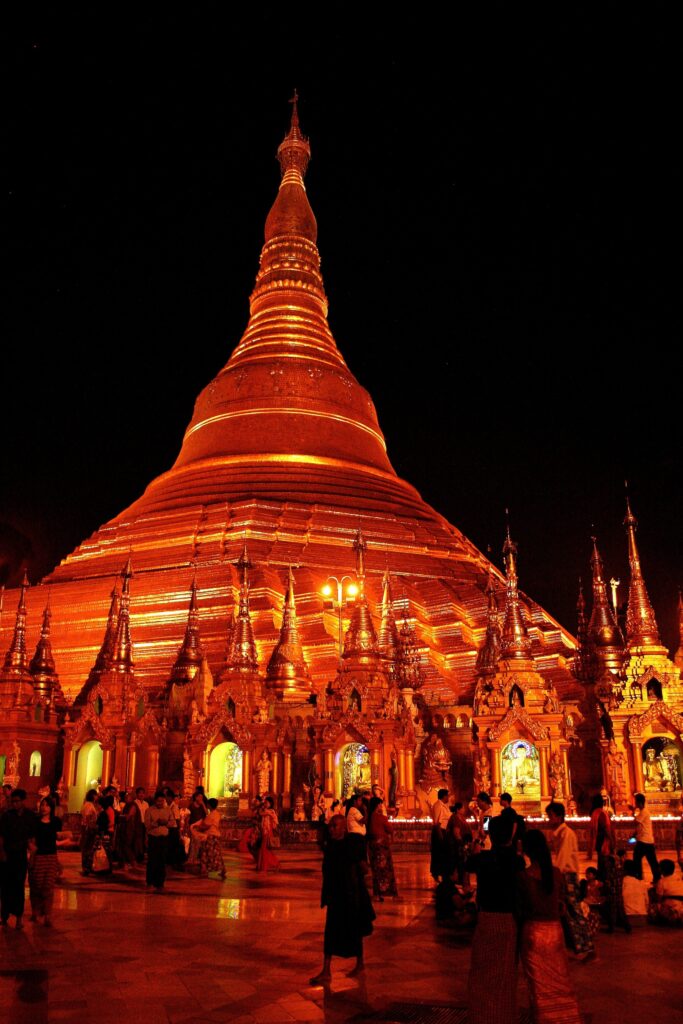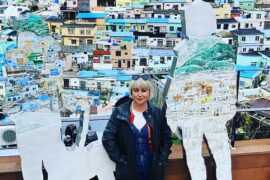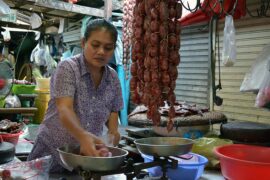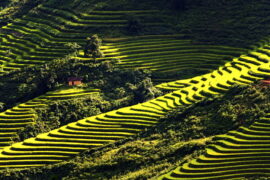After taking two years to travel around the world, Gavin Thomas got hooked on all things Asia and subsequently became the travel editor at Rough Guides. Now a freelance travel writer he’s often on the road but, luckily for us, he has taken the time to share his top 24 hours in Yangon.
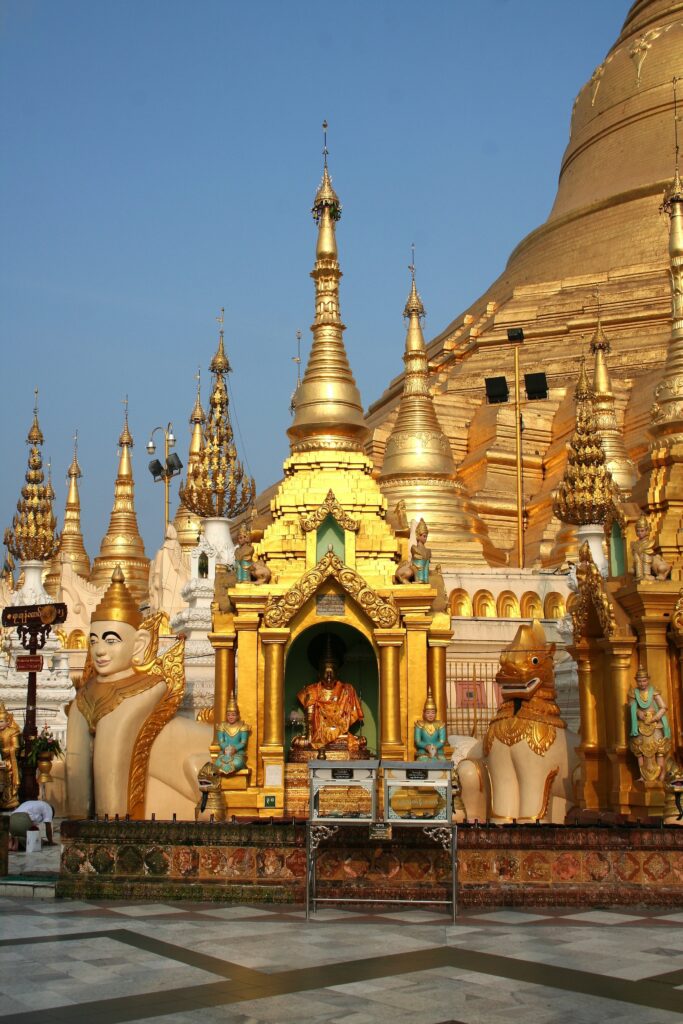
Myanmar’s largest city, the vibrant metropolis of Yangon is one of Southeast Asia’s most absorbing, but least appreciated, destinations. Following democratic reforms the city is now edging cautiously into the modern mainstream, but still preserves plenty of quirky character and time-warped charm offering a rare glimpse of an old Asia which has largely vanished from other major cities in the region.
A walk around the old downtown city centre is an experience in itself, its crumbling colonial-era streetscapes provide a memorable setting for an eclectic slice of Burmese life. Wander the streets and you’ll see crowds of Yangonites perched on tiny plastic chairs at the innumerable food stalls which clog the city’s pavements. There are quaint little mosques and temples wedged between the houses and crocodiles of red-robed monks weave between the traffic, alms bowls aloft. Just north of downtown, few visitors pass up the opportunity to visit the stupendous Shwedagon Pagoda, one of the world’s greatest Buddhist temples. Its vast gilded stupa looms high above the city, glowing with a rich golden lustre by day, and brilliantly illuminated after dark.
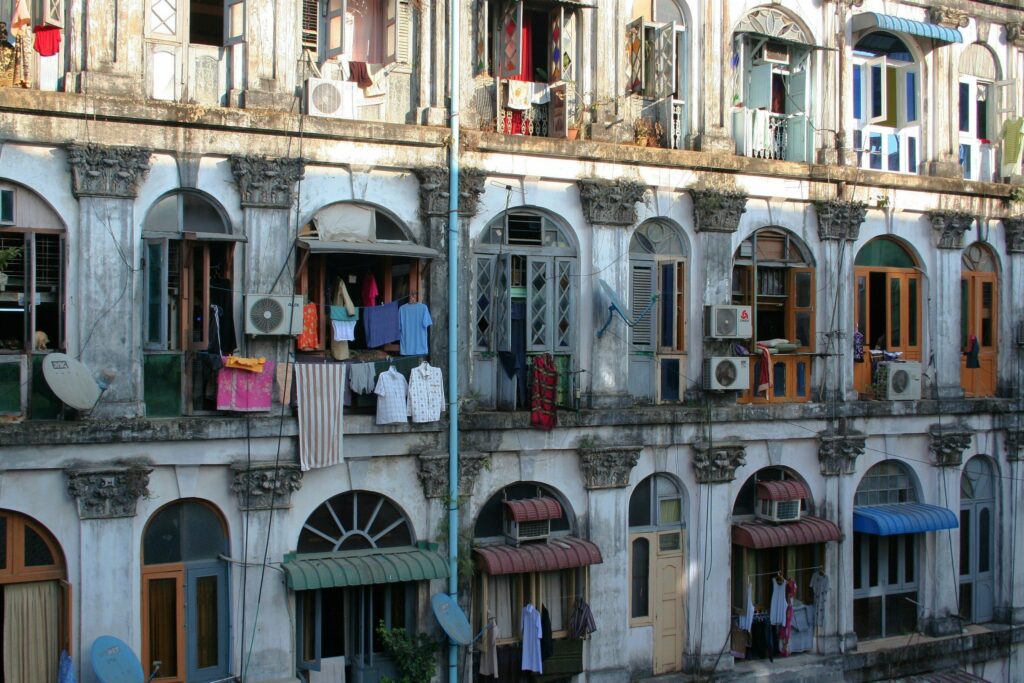
ONE-DAY ITINERARY
Sule Pagoda
Start at the Sule Pagoda, whose gleaming gold stupa rises from the dead centre of the city, providing downtown Yangon with its most striking landmark. All roads in the city seem to converge here (as does much of its traffic), though nothing detracts from the majestic pagoda itself – claimed, according to legend, to enshrine one of the Buddha’s own hairs – which rises serenely above the swarms of traffic and people swirling around its base.
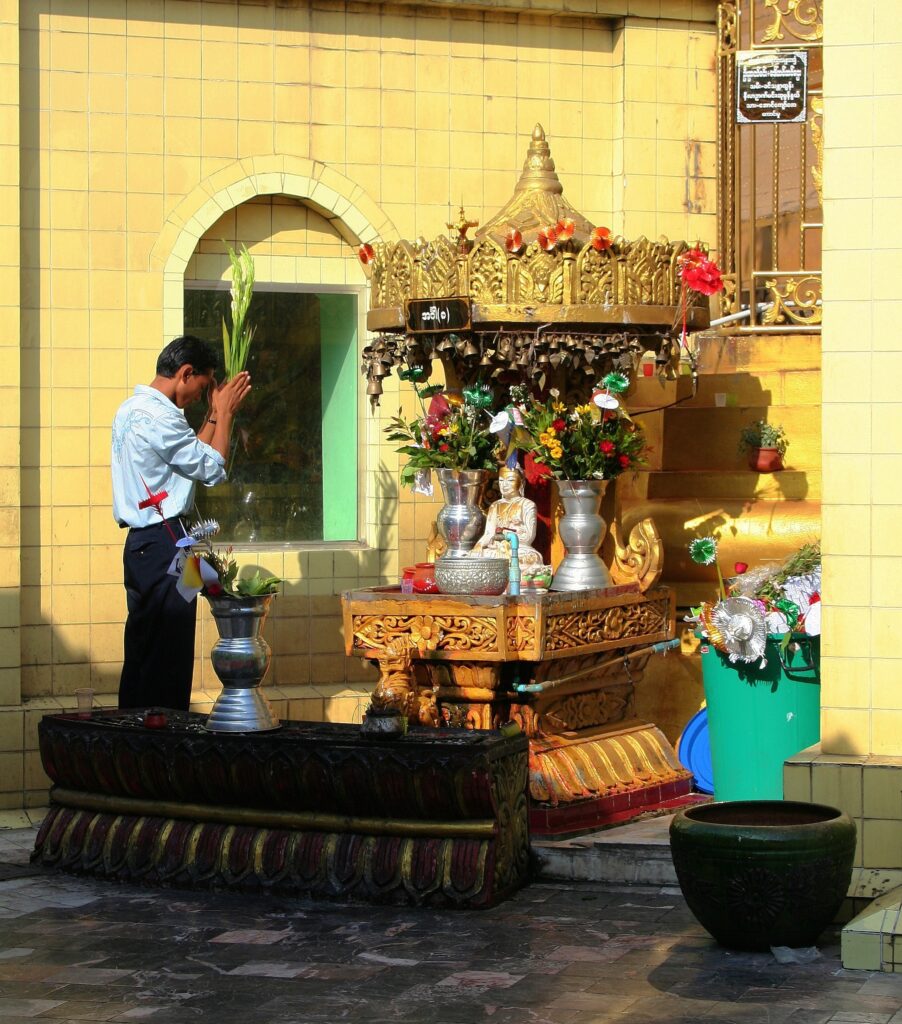
Around Mahabandoola Park Gardens
Walk east from the pagoda along Mahabandoola Road, past the flamboyant City Hall of 1924, its municipal severity tempered with quirky Burmese-style decorations. South of here stretches the welcome green rectangle of Mahabandoola Park Gardens, with the city’s obelisk-style independence monument in the centre and the huge red-brick pile of the old colonial-era Supreme Court rising to the east. Look out for the imposing building opposite the northeast corner of the gardens, formerly the famous Rowe & Co. (now a branch of the AYA Bank), a kind of Burmese Harrods and once the finest department store between Moscow and Melbourne.
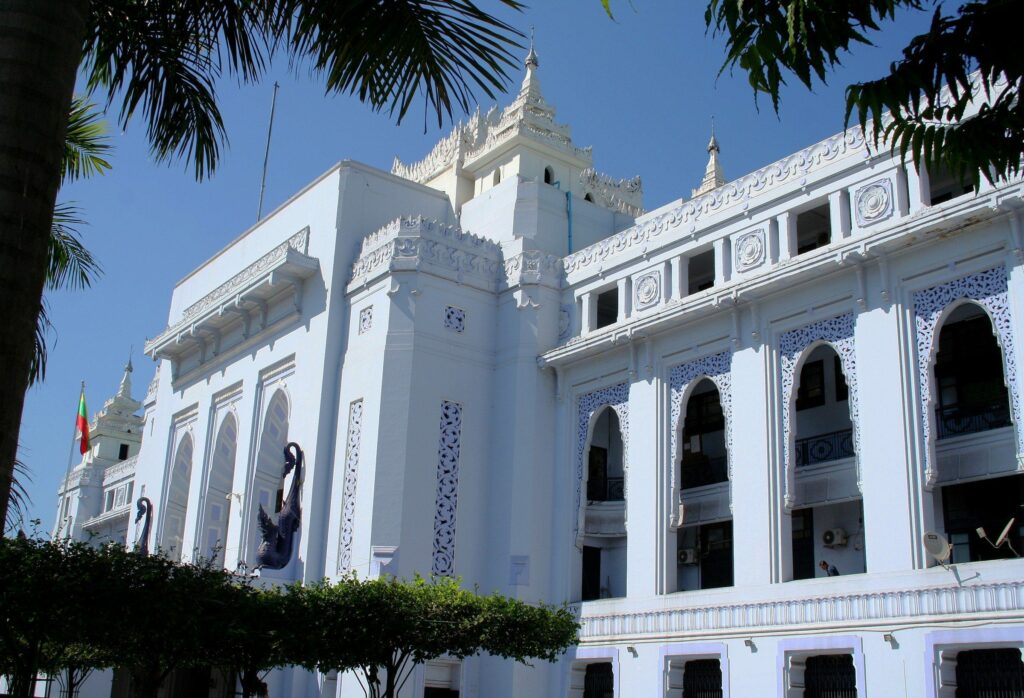
The Secretariat
Continue along Mahabandoola Road to reach the vast Secretariat. Occupying an entire block just east of the centre, the huge red-brick complex served as the former seat of British power in Burma and as the country’s first parliament building following independence. It was here that General Aung San, architect of Burmese independence, was gunned down in 1947. Largely off-limits since the military coup of 1962, the huge building (the size, it’s said, of the Louvre in Paris) is nowadays seriously run-down but still mightily impressive – a majestic ghost of colonial Rangoon’s old glory.
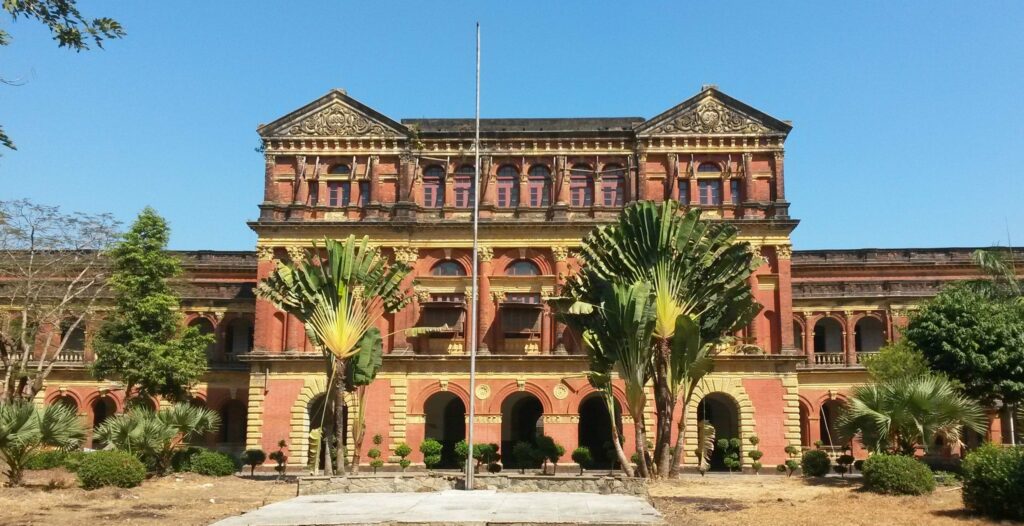
South to the Strand
Turn south down pretty Bogalayzay Street to reach Strand Road, facing Yangon’s rather ramshackle waterfront – although the Yangon River itself is obscured behind a mess of building, trucks, containers and cranes. Turn right (east) and head along Strand Road to reach the grand old Strand Hotel, opened in 1901 and now restored to its former five-star splendour. Further along, just past the junction with Pansodan Street, look out for the quaint old red-brick Custom House facing the river.
North along Pansodan Street
Turn north up Pansodan Street, downtown’s most imposing thoroughfare, a broad boulevard lined with an eye-catching array of colonial-era landmarks including the tower-topped Myanma Port Authority, the seashell-encrusted Inland Water Authority (once the headquarters of the old Irrawaddy Flotilla Company) and, at the junction of Merchant Street, the fancy Sofaer’s Building, built by Jewish entrepreneur Isaac Sofaer in 1906.
Diagonally opposite here, the Rangoon Tea House is a great place for lunch or a drink, serving up an eclectic menu of traditional Rangoon-style Burmese, Indian and Chinese food in chic modern surrounds.
East along Merchant Street
Continue east along Merchant Street, past the bottom of Mahabandoola Gardens. Continue for six skinny city blocks and then turn right up narrow 29th Street. Another classic colonial-era thoroughfare, the street has a pronounced subcontinental flavour, dotted with pretty buildings including a couple of Indian temples and the crumbling premises of the old sea-green Bombay Burma Printing Company.
Musmeah Yeshua Synagogue
Continue north to the end of the block, then turn west along Mahabandoola Road. Hidden away on 26th Street at the junction with Mahabandoola, the easy-to-miss Musmeah Yeshua Synagogue is one of Yangon’s hidden treasures and another memento of its remarkably multicultural past. The city was home to thousands of Jews from Iraq and India, attracted by the capital’s booming commercial opportunities.
Theingyi Zei Market
Immediately north of here, the chaotic Theingyi Zei Market offers a memorable slice of traditional Burmese life with innumerable market stalls packed sardine-tight in a pair of old buildings dating back to the early twentieth century. The market was originally founded by traders from Gujarat, and is still home to numerous Indian traders, particularly on the north side, close to Anawrahta Road, where you’ll also find the colourful little Sri Kali Hindu temple.
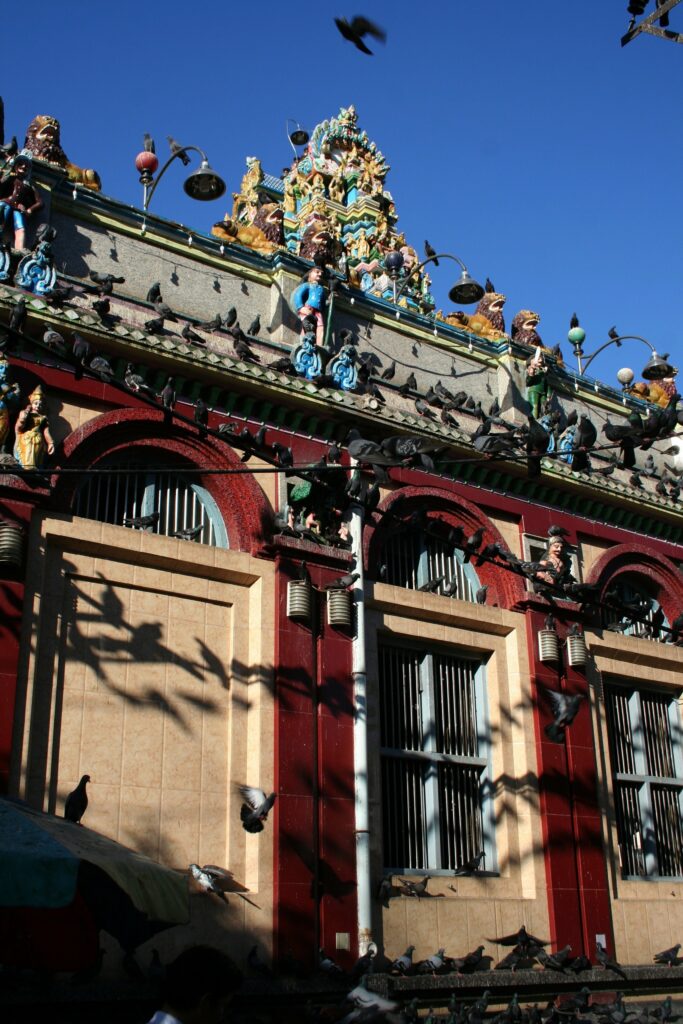
Bogyoke Market
A block north of here, the touristy Bogyoke Market offers a very different snapshot of Myanmar’s mercantile life, with hundreds of upmarket gold, gem and handicraft shops in the imposing old Scott Market building, constructed by the British in 1926. It’s not the most authentic taste of Burmese life, but can’t be beaten as a place to shop for souvenirs.
Good outlets include Botun (at the back of the market next to the main alleyway), for traditional artefacts and collectibles, Yangoods (right next to the main entrance), for colourful traditional designs reinvented in a range of bags, pictures and assorted bric-a-brac. Next to one another upstairs at the front, the Heritage Gallery and Yoyomay are superb places to hunt out heirloom-quality fabrics, lacquerware and other collectibles.
Stop for a break. There’s a fun collection of no-frills cafés in a covered courtyard on the west side of the market itself, or alternatively walk a few yards east down Bogyoke Aung San Road to reach the modern Bar Boon coffee house.
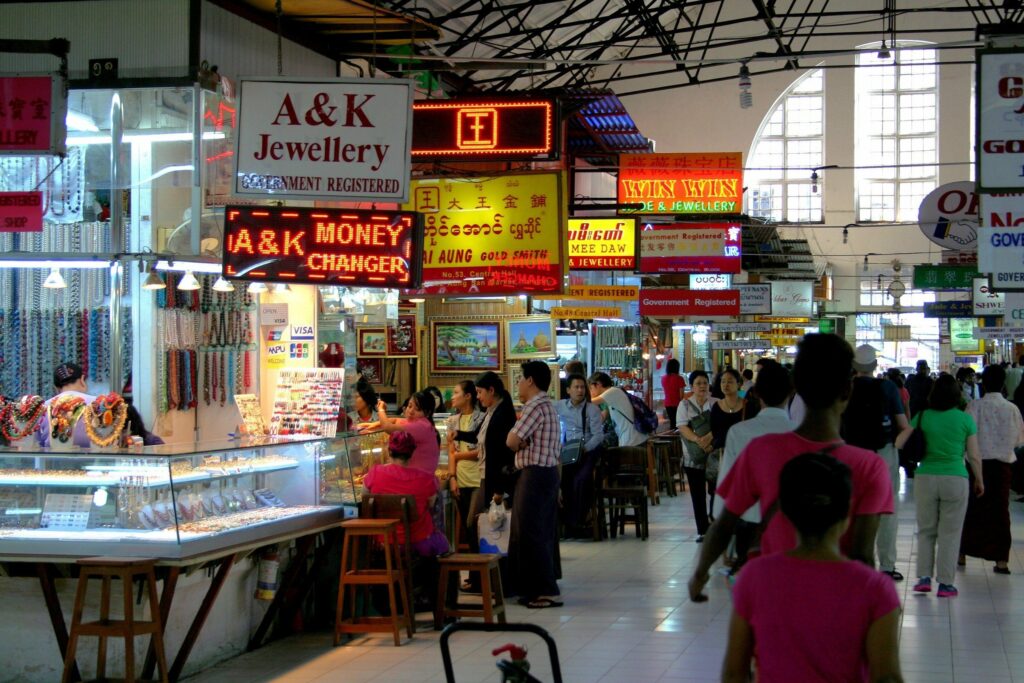
Shwedagon Pagoda
Jump in a cab and make the short drive north to the stupendous Shwedagon Pagoda, the world’s most spectacular Buddhist temple. Dominating the city skyline, the pagoda’s vast gilded stupa rises high above the surrounding suburbs like some enormous golden lighthouse.
The temple is unforgettable at any time of day or night but is particularly beautiful in the cool hours towards and just after sunset – when the stupa is magnificently illuminated. Aim to arrive at around 4pm and spend a couple of hours watching darkness fall.
Start at the southern entrance, from where a long covered staircase starts between a pair of huge chinthe (a kind of mythical creature somewhere between a lion and a dragon), climbing up between lines of colourful stalls selling religious offerings and assorted trinkets, with the offices of palmists and astrologers between.
Reaching the top you’ll come out at the gleaming marble terrace surrounding the stupa, home to an extraordinary array of shrines, statues and further stupas topped in a pin-cushion profusion of tall thin spire-like roofs.
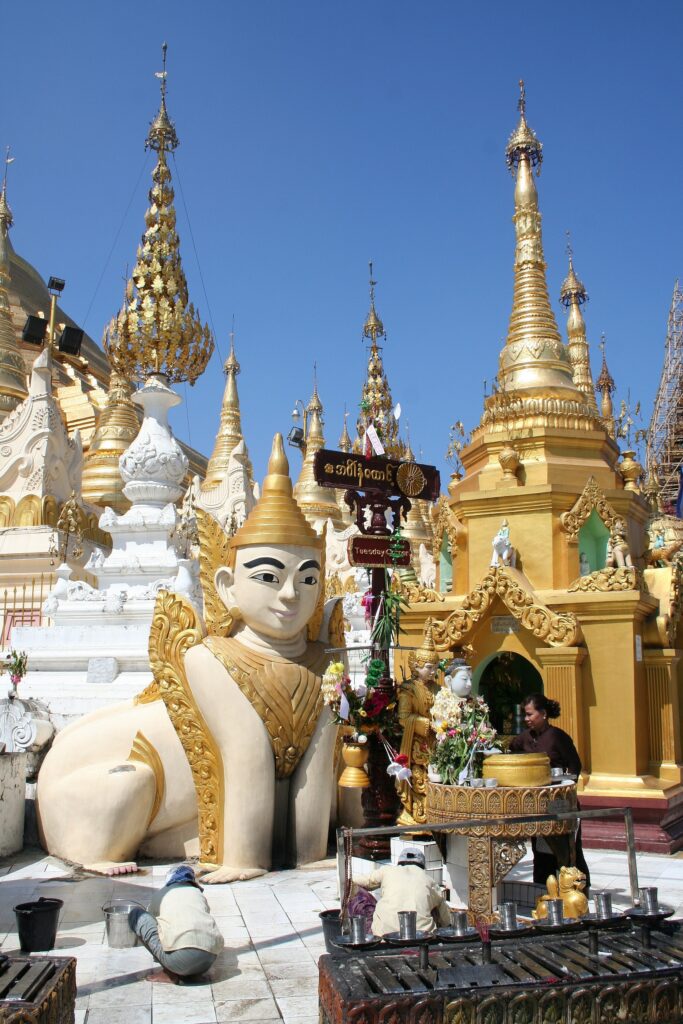
Chinatown
Catch a cab back to town and head to 19th Street at the heart of Yangon’s vibrant Chinatown. Somnolent by day, the strip bursts into life after dark, lined with cafés and dozens of food stalls serving up a huge array of Chinese and Burmese food – all washed down with considerable quantities of beer. A quintessential taste of Yangon street life, and a great place to end your day.
Other things to do Yangon
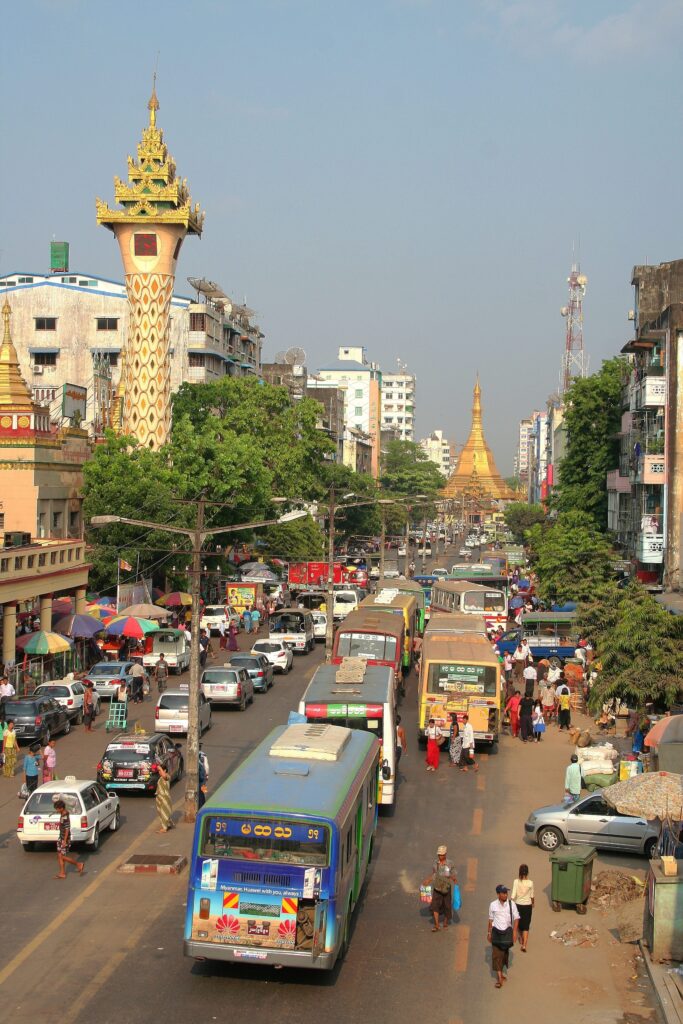
• Check out the temples of Chinatown, including the pretty Guanyin Gumiao and the even more flamboyant Kheng Hock Keong, facing the Yangon River and dedicated to Mazu, goddess of the sea.
• Admire the memorably huge reclining Buddha at the Chauk Htat Gyi Pagoda and the fantastically decorated seated Buddha at the nearby Nga Htat Gyi Pagoda.
• Visit the Bogyoke Aung San Museum in the atmospheric colonial-era home of Myanmar’s charismatic former leader (and the first childhood home of his daughter Aung San Suu Kyi), before going for a sunset stroll around idyllic Kandawgyi Lake nearby.
• Explore the imposing Botataung Pagoda in eastern downtown. The huge stupa is said to contain body relics of the Buddha himself.
• Take the short ferry ride across the Yangon River to the rustic little town of Dalah – an extraordinary change of scenery just ten minutes from the busy streets of the downtown city on the other side of the water.
If Gavin’s tales of golden spires at Shwedagon Pagoda or the colonial architecture in downtown Yangon have inspired you, take a look at our Best of Burma fully tailored journey. Other highlights include a sunset cruise on the Irrawaddy River and a trip to Mandalay’s ancient capitals, monasteries and palaces.
